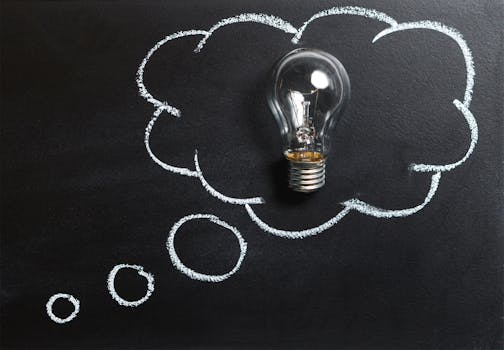What is energy planning?

What is energy planning?
In today’s world, energy plays a vital role in our daily lives, from powering our homes to fueling our industries. As we face increasing energy demands and the pressing need for sustainability, energy planning has become essential. It involves developing strategies and policies to manage energy resources effectively, ensuring we meet current needs while preparing for the future.
Energy planning isn’t just a technical process; it’s a roadmap for decision-makers to steer energy policy toward a sustainable and efficient future. By understanding energy planning, we can create a more resilient energy system that benefits everyone.
Understanding Energy Planning
Energy planning can be defined as a comprehensive approach to assessing energy needs and developing strategies to meet those needs over time. This process encompasses various aspects, including resource management, infrastructure development, and technology integration. It’s not a one-time effort but rather a continuous cycle that adapts to changing circumstances and advancements in technology.
Energy planning integrates with overall resource management, considering not only the energy supply but also the environmental, social, and economic impacts of energy use. A well-developed energy plan could help communities achieve their energy goals while minimizing negative effects on the environment.
Objectives of Energy Planning
The objectives of energy planning are multifaceted, reflecting the complexity of energy systems. Here are some of the primary goals:
-
Sustainability: One of the main objectives is to ensure that energy resources are used sustainably. This means promoting renewable energy sources and reducing reliance on fossil fuels, which contribute to climate change.
-
Efficiency: Energy planning aims to enhance energy efficiency. This involves optimizing energy use to reduce waste and costs, ultimately benefiting consumers and industries alike.
-
Meeting Future Energy Demands: As populations grow and economies develop, energy demands increase. Effective planning ensures that there is adequate infrastructure and resources to meet future needs.
-
Economic Development: Sound energy policies can stimulate economic growth. By creating jobs in renewable energy sectors and improving energy access, communities can thrive.
For a deeper understanding of these objectives, you can explore more on energy planning.
Key Components of Energy Planning
Effective energy planning consists of several key components that form its foundation. These elements help guide the process and ensure its success.
Data Collection and Analysis
Data is the backbone of energy planning. It provides the necessary insights into current energy usage patterns, resource availability, and future demand forecasts. Various methods of data collection can be employed, including surveys, sensor networks, and energy audits. Once collected, this data needs thorough analysis to identify trends and inform decision-making processes.
The importance of data in energy planning cannot be overstated. It enables planners to make informed decisions and develop targeted strategies based on factual evidence. For best practices in data collection, refer to this guide on energy data.
Stakeholder Engagement
Engaging stakeholders is crucial in energy planning. Stakeholders include government agencies, private sector players, non-governmental organizations, and the community. Their involvement ensures that various perspectives are considered, fostering collaboration and improving the quality of the energy plan.
Effective communication among stakeholders can lead to better decision-making and more robust energy policies. Tools and strategies for stakeholder engagement can be explored in detail at C40 Knowledge Hub.
Strategies for Effective Energy Planning
To navigate the complexities of energy planning, several strategies can be implemented.
Technological Innovations
Technology has the power to enhance energy planning significantly. From smart grid systems to energy management software, innovative tools help monitor and optimize energy use. These technologies can provide real-time data, enabling timely adjustments to energy strategies.
Using advanced predictive analytics can also improve energy forecasts, allowing planners to anticipate changes and adapt accordingly. A closer look at technological advancements in the energy sector can be found at IEA Innovation.
Policy and Regulatory Frameworks
Policies and regulations shape the landscape of energy planning. They govern how energy systems are developed, operated, and maintained. Understanding local and national policies is essential for successful energy planning, as compliance with regulatory frameworks ensures that energy projects can move forward without legal obstacles.
Effective policies should facilitate sustainable energy transitions while addressing economic, environmental, and social factors. You can read more about the necessary frameworks in the Global Energy Policy Framework.
Challenges in Energy Planning
Despite its importance, energy planning faces several challenges that can hinder progress.
Uncertainty in Energy Demand
One of the significant challenges in energy planning is the unpredictability of energy demand. Changes in economic conditions, technological advancements, and shifts in consumer behavior can all lead to fluctuations in energy needs. Planners must be prepared to adapt their strategies to accommodate these uncertainties.
Environmental Considerations
Balancing energy planning with environmental sustainability goals is crucial. While meeting energy demands is essential, it shouldn’t come at the expense of ecological health. Integrating renewable energy sources and focusing on energy efficiency can help mitigate the environmental impact of energy consumption.
The interplay between energy planning and environmental considerations highlights the need for sustainable practices. For insights into overcoming clean energy transition challenges, you can explore the IEE blog on renewable energy.
Conclusion
Energy planning is a critical process that ensures we meet our current and future energy needs while promoting sustainability and efficiency. By understanding its objectives, key components, effective strategies, and challenges, we can work toward a resilient energy future.
As we navigate the complexities of energy systems, let’s remember that effective energy planning is not just about managing resources; it’s about creating a better, more sustainable world for future generations. Embracing innovative technology, engaging stakeholders, and adhering to robust policies can lead us on the right path toward energy security and environmental stewardship.